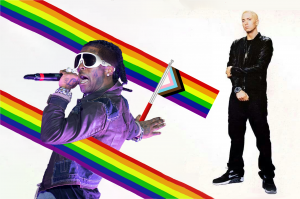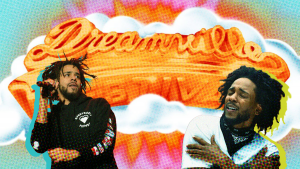Picture this: It’s Easter weekend, and you’re home for the holiday. You’re talking with your family — nothing serious — when you see it: a small crystal bowl, the kind with a little lid, sitting on an end table. It’s filled to the brim with candy-coated death, aka Brach’s jelly beans.
I’m sorry to all of those people who actually like Brach’s jelly beans, but they’re always around, to the point where you’re not even sure where they come from. Then you always feel obligated to eat just one, seeing if this time they’ll actually be any good. OK, that’s more of a personal experience on my part, but they are truly awful jelly beans.
However, as many people might have discovered as children, there is a wide selection of actually tasty jelly beans — such as Starburst, which are the best jelly beans, or Jelly Belly, which is arguably the most famous jelly bean company in the world, or even a brand called Surf Sweets for those who prefer organic candies.
The most interesting thing about jelly beans, however, is that no one knows where they came from. The earliest reference to them is way back during the Civil War with Boston candy maker William Schrafft. They were first mentioned in “Chicago Daily News” July 5, 1905, but despite this, jelly beans didn’t become really popular until the 1930s. Jelly beans were even a favorite snack of President Ronald Reagan. Jelly Belly created their blueberry flavor specifically for the president’s inauguration because he liked them so much.
There are millions of different jelly bean flavors out there, and not everyone likes the same things — that’s why there’s so many kinds being created. Whether you like Brach’s, Starburst, Jelly Belly or even Bertie Bott’s Every Flavor Beans, Easter is the time to go out into the world and satisfy all of your jelly bean cravings.
Fun facts
1. It takes seven to 21 days to make a jelly bean.
2. There are 130 calories and 37 grams of sugar in one serving of jelly beans, which is about 35 jelly beans.
3. In the early 20th century, a “jelly-bean” was slang for a man with style but no substance.
4. Jelly beans were a regular penny candy offered at general stores.
5. They were the first candy to be sold by weight, rather than by piece, and were originally only sold by color.
6. The jelly bean is associated with Easter because of its egg-like shape.
7. National Jelly Bean Day is April 22.
8. Each year in America, there are 16 billion jelly beans manufactured just for Easter. This is enough to circle the Earth more than three time if they were laid end-to-end.




